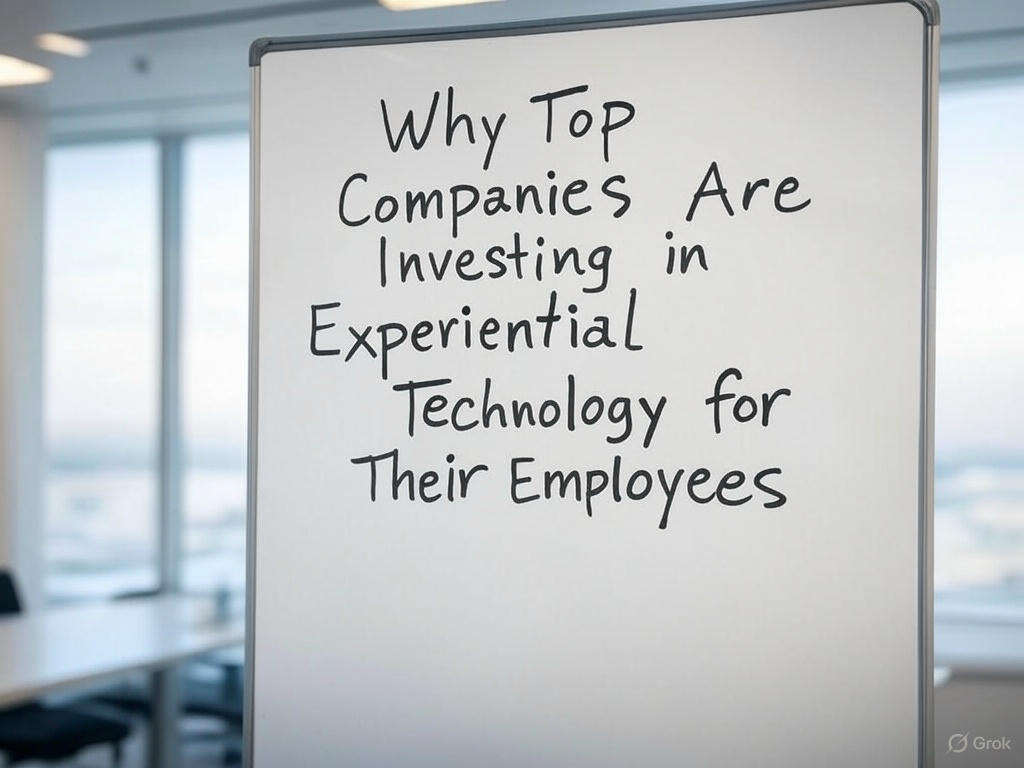Leading organizations are increasingly turning to experiential technologies to cultivate a dynamic and engaged workforce. These innovative tools not only enrich the employee experience but also drive productivity, enhance satisfaction, and position companies at the forefront of workplace innovation. This article delves into the motivations behind such investments, explores the spectrum of technologies being adopted, and examines the tangible benefits realized by top companies.
Understanding Experiential Technology in the Workplace
Experiential technology encompasses interactive and immersive tools designed to create engaging experiences for users. In the corporate context, these technologies aim to enrich the employee experience and foster a more dynamic and connected work environment.
Defining Experiential Technology
Experiential technology refers to digital tools and platforms that provide immersive, interactive experiences, often leveraging advancements such as virtual reality (VR), augmented reality (AR), and artificial intelligence (AI). These technologies simulate real-world scenarios, facilitate interactive learning, and enhance user engagement.
Examples of Experiential Technologies in Corporate Settings
- Virtual Reality (VR) Training Modules: Utilizing VR to simulate real-life situations for employee training, allowing for risk-free, hands-on experience.
- Augmented Reality (AR) for Collaboration: Implementing AR tools to overlay digital information onto the physical environment, enhancing collaborative efforts among teams.
- AI-Powered Onboarding Assistants: Deploying AI-driven chatbots to streamline the onboarding process, providing instant responses to new hire inquiries and automating routine tasks.
What Drives Companies to Invest in Experiential Technology?
Understanding the motivations behind corporate investments in experiential technology sheds light on its perceived value and strategic importance.
Enhancing Employee Engagement and Satisfaction
Engaged employees are pivotal to organizational success. By integrating experiential technologies, companies create stimulating work environments that promote active participation and job satisfaction. For instance, implementing interactive tools can transform mundane tasks into engaging activities, fostering a more vibrant workplace culture.
Boosting Productivity and Performance
Experiential technologies often streamline workflows and reduce the learning curve associated with complex tasks. For example, AI-powered assistants can automate routine processes, allowing employees to focus on higher-value activities. According to a report by Business Insider, Hitachi’s implementation of an AI digital assistant reduced onboarding time by four days and decreased HR staff involvement from 20 hours per new hire to 12 hours.
Attracting and Retaining Top Talent
A technologically advanced workplace serves as a magnet for skilled professionals who seek innovative and forward-thinking employers. Companies that prioritize the employee experience through cutting-edge technologies position themselves as desirable places to work, thereby enhancing their talent acquisition and retention strategies.
How Are Experiential Technologies Transforming Employee Training?
The integration of experiential technologies is revolutionizing traditional training methodologies, offering more effective and engaging learning experiences.
Virtual Reality for Immersive Learning
VR enables employees to engage in realistic simulations, providing hands-on experience without real-world risks. This approach is particularly beneficial in industries requiring complex skill sets, as it allows for repeated practice in a controlled environment.
Gamification to Motivate and Engage
Incorporating game-like elements into training programs leverages intrinsic motivators such as competition and achievement. Research indicates that gamification can lead to higher levels of employee engagement and improved learning outcomes. A study published in the Journal of Business Research found that gamified training programs resulted in a 60% increase in employee engagement.
An estimated 55% of American workers would prefer to work for a company that embraces gamification, reflecting a growing demand for more engaging and dynamic workplace environments.
AI-Driven Personalized Learning Paths
Artificial intelligence facilitates the creation of customized training programs tailored to individual employee needs and learning styles. This personalization enhances the effectiveness of training initiatives and accelerates skill development.
The Role of Experiential Technology in Corporate Events
Beyond training, experiential technologies are redefining corporate events, making them more engaging and memorable.
360-Degree Photo Booths for Interactive Experiences
Using 360-degree photo booths with photo booth 360 software at corporate events provides attendees with an immersive and interactive experience. These booths capture panoramic images, encouraging social sharing and enhancing event engagement. Such photo booths serve as powerful event engagement tools, drawing attendees into the experience and fostering a sense of connection.
Virtual and Hybrid Event Platforms
With the rise of remote work, virtual and hybrid events have become commonplace. Experiential technologies facilitate the uninterrupted integration of virtual attendees, ensuring an inclusive and engaging experience for all participants.
Augmented Reality for Product Demonstrations
AR enables companies to showcase products in an interactive manner during events, allowing attendees to visualize features and functionalities in a simulated environment.
What Challenges Do Companies Face When Implementing Experiential Technology?
While the benefits are substantial, integrating experiential technology into the workplace is not without challenges.
High Initial Investment Costs
The adoption of advanced technologies often requires significant upfront investment in hardware, software, and training. Companies must conduct thorough cost-benefit analyses to ensure a favorable return on investment.
Integration with Existing Systems
Ensuring compatibility between new experiential technologies and legacy systems can be complex. Seamless integration is crucial to avoid disruptions and maximize the effectiveness of technological investments.
Addressing the Learning Curve
Employees may require time and training to adapt to new technologies. Providing adequate support and fostering a culture of continuous learning are essential to facilitate smooth transitions.
Conclusion
Investing in experiential technology represents a strategic move for companies aiming to enhance employee engagement, improve performance, and maintain a competitive edge in the market.
By thoughtfully integrating these technologies, organizations can create dynamic work environments that attract top talent and drive sustained success. As the technological landscape continues to evolve, staying abreast of emerging tools and their applications will be imperative for forward-thinking business leaders.






